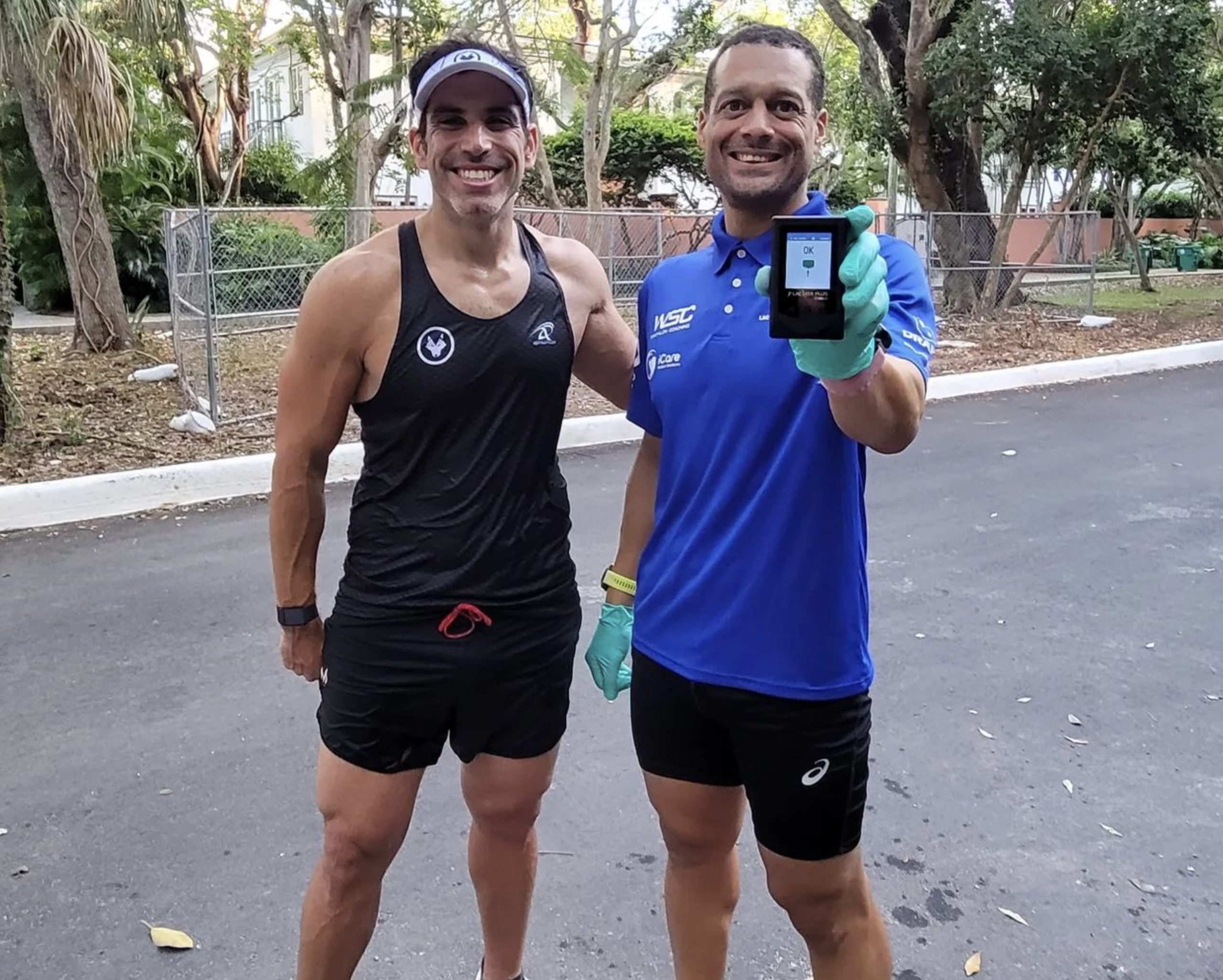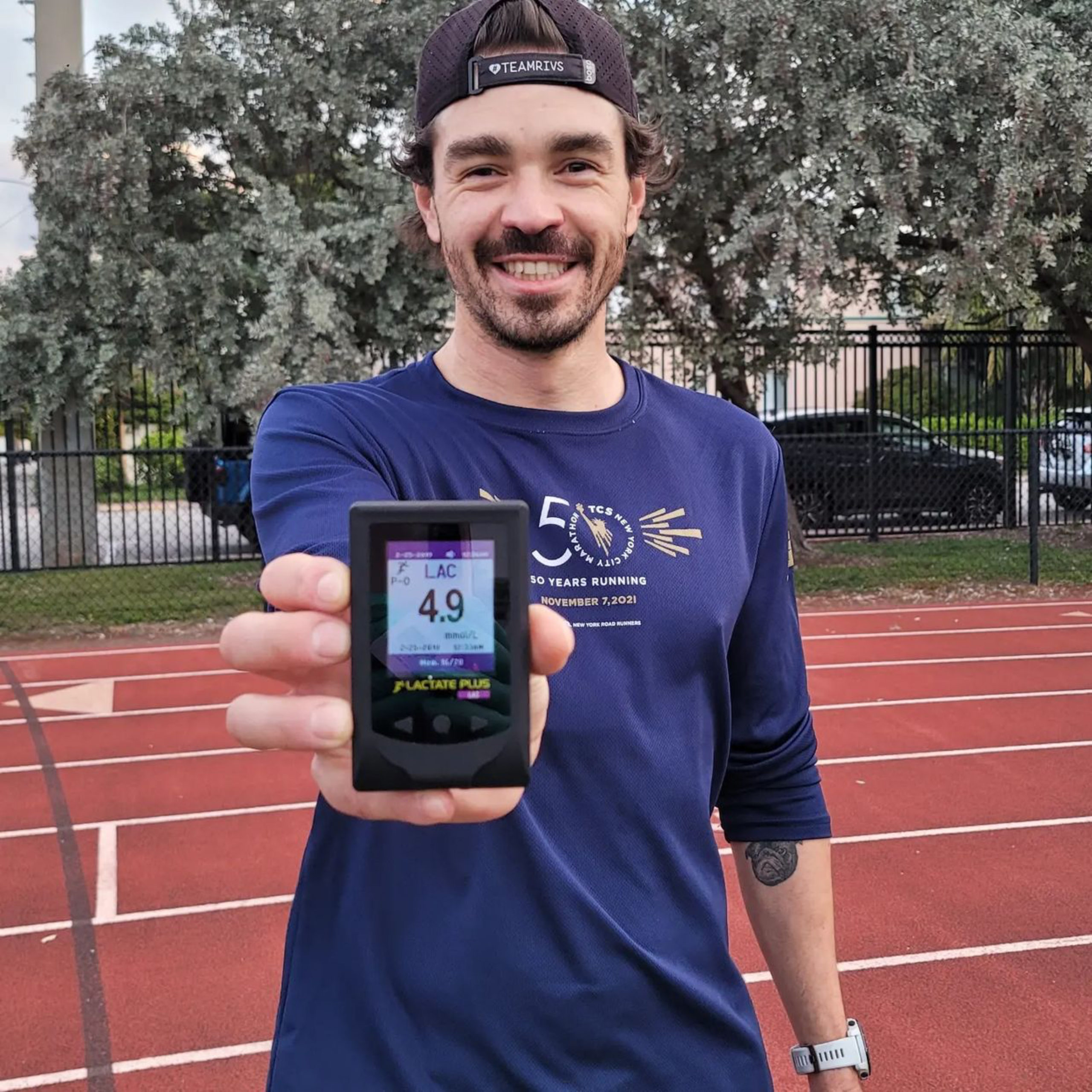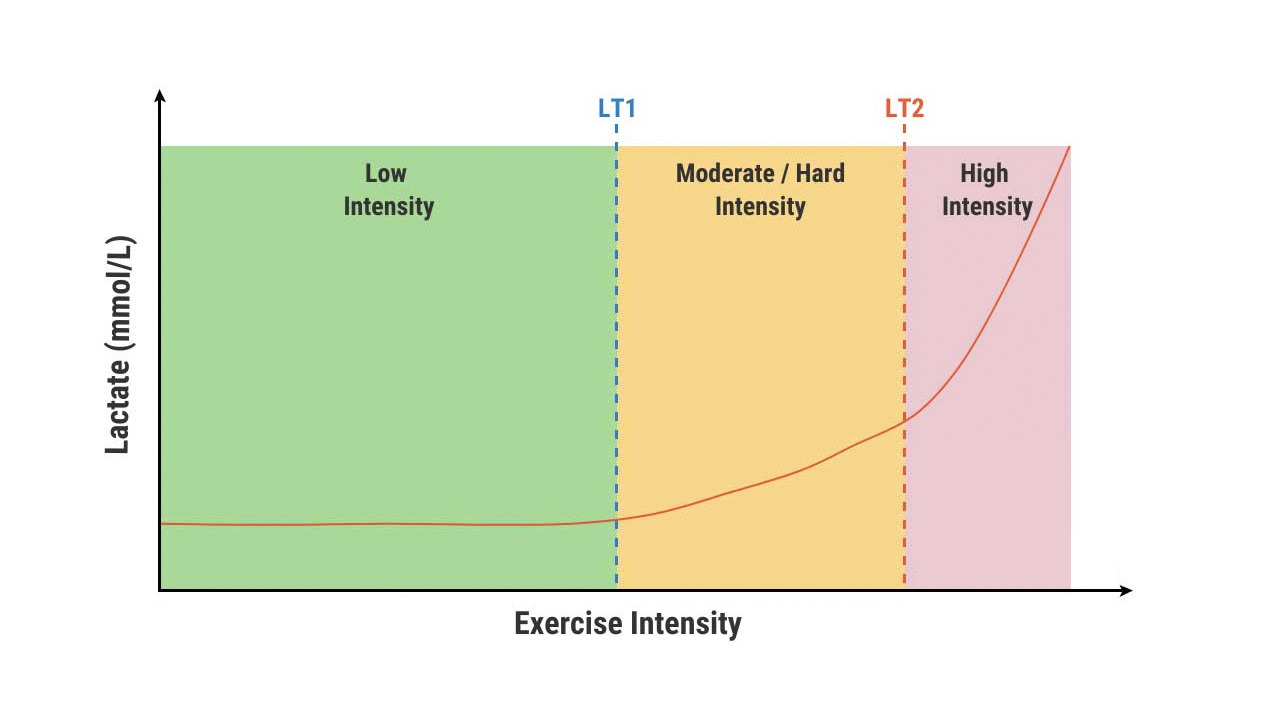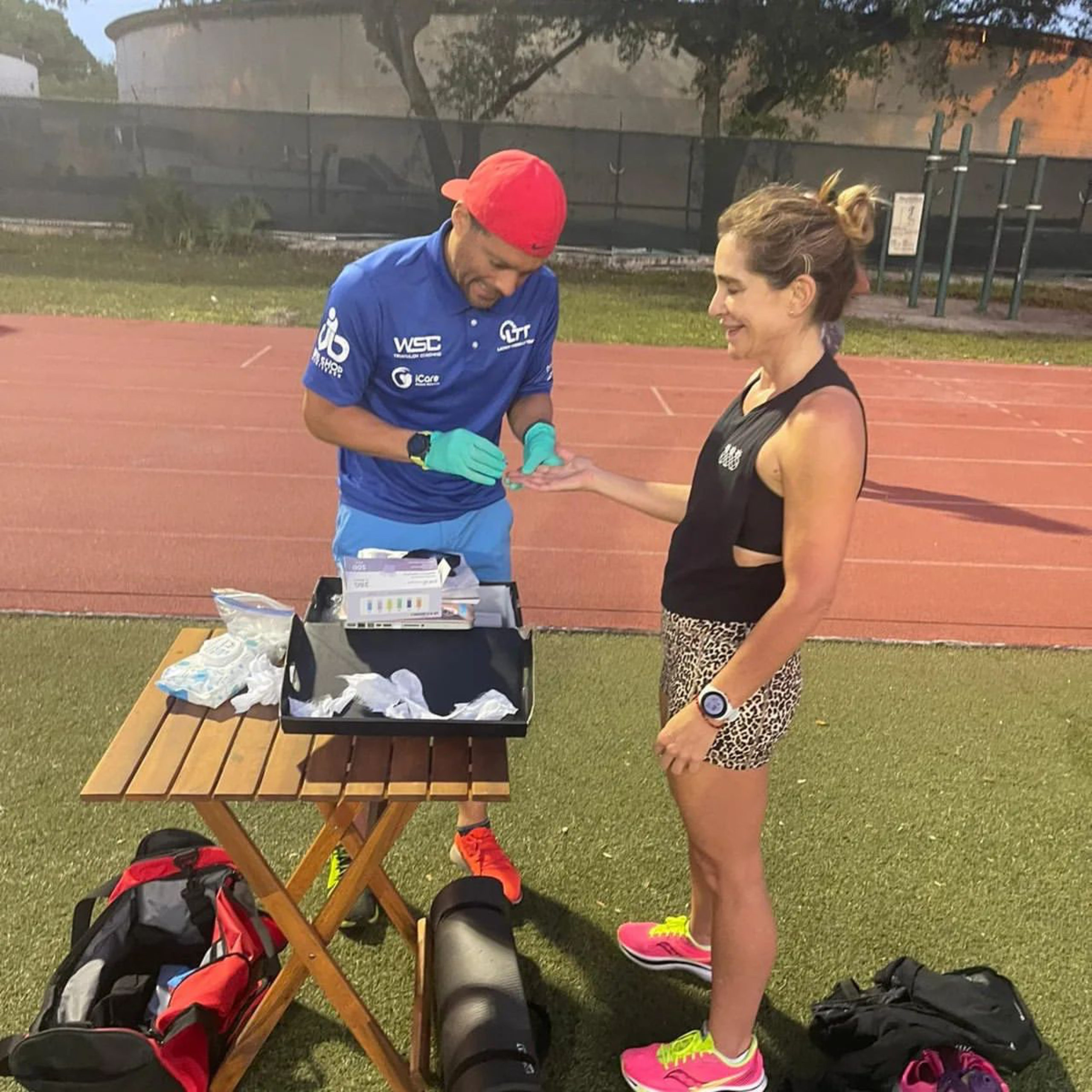Lactate Threshold Testing, What is it? How do you use it?
Training zones are deeply personal, yet most athletes use general formula’s to calculate them. Lactate Threshold Testing may just be how to set zones specific for you.

For many, the term lactate threshold is a term seen in training plans and in workouts. It’s a pace, heart rate or power number that symbolizes our maximum long term sustainable limits. But what does that marker really mean? how do you test it and ultimately, how do you use it?
Elite endurance and performance coach Jasmel (Jazz) Acosta with WSC Triathlon is all too familiar with the concept of threshold work. Acosta is a journey man of the sporting industry. He started off with a professional career in mixed martial arts and transitioned to triathlon, where he currently competes and coaches at the elite age group and professional levels.
He attributes much of his success to his deep understanding of the science behind what is happening in the body during training and exercise. “Bio Hacking” as he calls it, is the testing and understanding of how each individual reacts to different training scenarios.
One of his primary areas of focus is identifying and understanding each athlete’s lactate threshold.
According to the University of Virginia School of Medicine, lactate threshold is defined as the point at which, during incremental exercise, lactate builds up in the bloodstream at a level that is higher than resting values. The lactate threshold is a good predictor of what exercise pace can be maintained over a prolonged period of time without fatigue. Athletes typically reach lactate threshold at a higher percentage of VO2 max.
“Understanding exactly where that point exists is crucial for athletes,” said Acosta. “If you are too far below it on certain workouts, you are leaving gains on the table. If you go over it, you are overtraining and affecting your ability to recover for the next workout.”

The Science Behind Lactate Thresholds
First things first, in order to dive in, we need a general understanding about how the body creates and uses energy. In order to make your muscles move, your body needs to supply them with a fuel. Ultimately, the fuel that as physically absorbed by the muscles is called Adenosine triphosphate, better known as ATP. This is the gasoline or petrol for your engine to fire.
The body has multiple ways to supply that fuel depending on the intensity and duration of the workout.
- Stored ATP: your body always has a small amount of ATP stored and ready for use. It’s just enough to power the muscles for approximately three seconds at high intensity.
- Creatine phosphate: a high energy compound that can be turned into ATP very quickly and gives you eight to 10 seconds of high intensity energy.
- Glycogen without oxygen (also known as the anaerobic energy system): your body taps into the glycogen stores of your muscles. This system can power your muscles for one to two minutes. A byproduct of this is lactic acid.
- Aerobic respiration (also known as your aerobic energy system): Using Oxygen this time, your body processes glycogen and in some cases fat. The use of oxygen in the process lowers the production of lactic acid, allowing you to sustain your muscles for several hours.
Here is a real world scenario to explain the jargon above: Your training plan calls for a hard one mile run.
- For the first three seconds of your run, your muscle cells use the ATP they have stored within them.
- For the next eight to 10 seconds, your muscles use the creatine phosphate stores on hand to create ATP or energy.
- Next, your anaerobic system, which doesn’t require any oxygen, kicks in to produce energy. Here the body breaks down the glucose it has stored in the muscles.
- At the two to three minute mark, your aerobic respiration takes over and oxygen is now used to convert energy glycogen and fat stores.
As lactic acid builds in the muscles, you may begin to feel its effects in the form of fatigue and soreness, and after a while you’ll lose your ability to maintain the same level of energy output and pace.
Understanding when this will happen is critical for endurance athletes.

LT1 vs. LT2
Lactate threshold is the point at which your body produces more lactic acid than it can process. The production and processing of lactic acid occurs on a curve, increasing progressively with intensity. There are certain points on this curve that can be used as key markers for training.
Lactate Threshold 1 (LT1) is the first marker on the curve. This point signifies the lowest intensity at which there is a measurable increase in blood lactate concentration. LT1 can roughly be defined as marathon pace or half Ironman pace.
Lactate Threshold 2 (LT2) is the second marker and the point at which lactate levels start to increase more dramatically. Once you’ve reached LT2, you’re producing lactate faster than your body can process it. LT2 would be closer to your 10k pace or sprint distance triathlon pace.
Importance of Lactate Threshold Testing
Athletes today use an array of guidelines and calculators to estimate their thresholds and training zones.
A popular yet highly generalized approach is to calculate heart rate training zones using the 220 method. Here to calculate max heart rate, subtract your age from 220. This is the most basic of measurements and not always accurate.
Another more advanced calculation is the 20 minute Functional Threshold Power (FTP) test on the bike.
While these methods provide some structure and direction, they are not truly dialed in to your personal metabolic systems. The most accurate is to test blood lactate levels. Knowing with accuracy where your thresholds fall will allow you to train to your maximum ability without crossing the line.

The Lactate Threshold Test
Lactate threshold testing involves a skin prick blood test and should be done in a sterile environment by an experienced professional equipped with the proper PPE.
Acosta tests his athletes independently across all three disciplines. The athlete begins at an easy effort for a few minutes then stops to take a reading. The volume of lactate in the blood is measured via a finger prick blood test. With each reading, Acosta records every variable possible including heart rate, temperature, humidity, time of day, pace and power.
After the first reading, the athlete starts again, this time with an incremental increase in intensity. After a few minutes, another reading is taken. This process is repeated until Acosta feels he’s acquired the appropriate amount of data.
“The magic number is four millimoles per liter of blood (mmol/L),” said Acosta. “Four mmol/L is typically where we see LT2, after that point you see blood lactate shoot up to eight to 10 mmol/L very quickly.”
“Each test is a bit different as it’s highly dependent on the athlete,” shared Acosta. “I had one athlete that was new to the sport and relatively unfit. The whole test took 15 minutes because his lactate spiked pretty early. On the other hand, I had a professional athlete where it took us almost an hour of increasing intensity to get his levels up.”
What Does the Data Tell Us?
Once complete, Acosta will analyze the data and provide the athlete with a full breakdown of detailed training zones that are unique to their lactate processing abilities.
“I use a five zone structure and provide a range for each that includes heart rate, power and pace,” said Acosta.
This data represents a highly detailed snapshot of current fitness level. Ideally athletes would have lactate testing performed regularly to assess their fitness progression.
“For my coached athletes, I like to test them once a month to make sure we are seeing the progress we need,” shared Acosta.
Since starting to use lactate threshold testing, Acosta has seen a noticeable difference with his athletes as well as himself. “You are able to really max out your training by knowing exactly where your limits are. You can push your efforts with confidence and simultaneously reduce the risk of injury from overtraining.”

